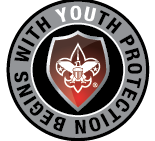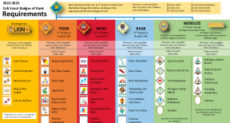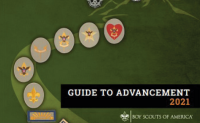 You might have heard a story recently, first reported by National Public Radio, about how cases of child abuse in the past by volunteers of the Boy Scouts of America were significantly under-reported. The existence of the Ineligible Volunteer (IV) files, or “perversion files” as they were sometimes called internally, was revealed in 2012 as the result of a court case. These files were secretly kept by the BSA as far back as the 1920s and contains information on thousands of volunteers suspected in tens of thousands of incidents of child abuse.
You might have heard a story recently, first reported by National Public Radio, about how cases of child abuse in the past by volunteers of the Boy Scouts of America were significantly under-reported. The existence of the Ineligible Volunteer (IV) files, or “perversion files” as they were sometimes called internally, was revealed in 2012 as the result of a court case. These files were secretly kept by the BSA as far back as the 1920s and contains information on thousands of volunteers suspected in tens of thousands of incidents of child abuse.
As one lawsuit led to another, the BSA began exploring bankruptcy protection proceedings last year in order to shield itself from eventual destruction by a potential onslaught of “me too” cases. That’s not to diminish the concerns of those aggrieved, but as we have seen with other organizations, we could be on the verge of extinction as an organization if these lawsuits proceed to destroy the BSA.
I’ve been asked by friends and co-workers about the latest news. The impression the general public gets is that the BSA harbors thousands of child molesters and does nothing about it. The reality in this day and age is far from that, and the results of the BSA’s realization of the problem and corrective actions over the last thirty years or so shines a brighter light on the organization.
There is good news, below, but first, a little history:
1988 Youth Protection Plan
In 1988. the BSA retained an agent of the Federal Bureau of Investigation to develop a series of policies to protect youth from abuse. Central to these policies are those which we know and follow today: Two-deep leadership, no one-on-one contact, separate accommodations for adults and youth and for males and females, appropriate training, equipment and attire, and the prohibition on hazing and secret organizations. Almost anyone who is a current volunteer has been expected to adhere to these policies for their entire Scouting career. The move was lauded as being a giant step forward in the recognition of the child abuse problem, but the BSA was still criticized for not taking additional measures including conducting background checks on volunteers, a step that wouldn’t be taken for another twenty years.
However, the lack of mandatory training often led volunteers to disregard these policies or otherwise be unaware of them. Training was highly recommended but not required, and Youth Protection training was difficult to obtain, as it was only offered sporadically in most areas and there was no online training yet. I first took Youth Protection training in person (offered only once or twice a year at the time) in my third year as a volunteer and managed to convince only one of our den leaders to go with me.
Subsequent to the creation of this Youth Protection Plan, several news agencies did investigative reporting on abuse cases within the BSA, revealing the existence of the IV files and interviewing plaintiffs in court cases. One in particular, the Washington Times, portrayed the BSA as a haven for pedophiles who wanted to exploit children because “that’s where the boys are.” The inference may have been overly hyperbolic given the paper’s conservative editorial stance, but the characterization stung.
2010 Court Case
In a highly publicized case, an Oregon jury awarded $18.5 million to a man who, as a youth, was abused by a volunteer leader many years prior. The volunteer had been reported to the BSA for serial child sexual abuse but was allowed to continue in his position, after which he assaulted the plaintiff. It was the largest settlement in a child abuse case to date.
Following the court case, the plaintiff convinced the court to force the BSA to release the “perversion files”, covering twelve hundred cases over a twenty-year period. In testimony, it was found that, rather than swiftly taking strong action, many BSA executives preferred to sweep things under the rug so as not to shine a bad light on the organization. Though most of the cases happened well over thirty years ago, the BSA is still litigating release of its files since 1985.
2019 revelations
As the “me too” movement strengthens, cases continue to mount against the BSA over past actions by its volunteers. One attorney specializing in such cases claims to have signed more than 180 clients wishing to pursue action. Knowledge of the existence of the IV files is nothing new, but as courts and investigators continue to probe inside the BSA, it has become apparent that there may be more than what the organization has so far disclosed. The move to explore bankruptcy protection may be a sign that we’ve only seen the tip of the iceberg, and only factors such as the expiration of the statute of limitations may be able to save the BSA from substantial damage.
The good news for today’s youth and leaders
Today’s BSA is a far safer place for youth than it has ever been. Mandatory Youth Protection training, renewed every two years (and with plans to require it annually soon) is the first line of awareness. Newer rules as girls come in to our traditional programs protect against abuse across gender lines, and other policies, such as the two-year maximum age separation for tentmates, intend to stanch youth-on-youth abuse. And background checks on volunteers, instituted in 2008, helps to weed out known offenders.
In a recent press conference, Chief Scout Executive Michael Surbaugh, along with Dr. Janet Warren, professor of Psychiatry and Neurobehavorial Sciences at the University of Virginia, outlined the BSA’s current state when it comes to youth protection and abuse cases. Although five cases were reported in 2018, Surbaugh acknowledges that “even one incident of abuse is one too many,” and the BSA continues to develop ways to improve the protection of our youth. And while all reported instances of child abuse are referred to law enforcement – as has been the case for fifty years – the threshold for being removed as a volunteer is far below that level. Suspected or known violations of youth protection policies is all that it takes.
Dr. Warren painted a glowing picture of our policies and their implementation. Her team reviewed the unredacted IV files (the Volunteer Screening Database, as it’s now known) and concluded that the database and surrounding policies and procedures to separate children from potential abusers are “cutting edge, and it worked”. The incidence of child abuse within the BSA is minuscule compared to society in general, and measures implemented since the 1980s have been “highly effective” in preventing abuse. And while Dr. Warren observed that there isn’t a simple way to way to profile all potential abusers, the research points out the need for increased sophistication in screening volunteers.
The next steps
The job of finding ways to protect our youth from abuse is never finished. There will always be potential abusers among us, and new methods for screening – and maybe more importantly, training – volunteers will be developed. Erin Eisner, the BSA’s Chief Strategy Officer (herself a Scout parent) stated that the BSA’s efforts to track and separate from potential abusers is a recognized best practice. She joined the call for a national registry to serve as a clearinghouse for all youth-serving organizations so the BSA can share what it has learned with others. And she reiterated her confidence that Scouting is safer for youth today than it has ever been, and getting safer all the time. Parents, Eisner said, can be confident in our program, and be proud of our efforts to protect children as they learn, have fun and experience Scouting.
Sadly, we probably won’t be able to eliminate abuse completely, but as the statistics have shown, there has been a vast improvement in the rate of abuse cases over the years. A culture of keeping youth safe has been instilled in our volunteers and the word is out that abusers will not find cover and refuge within our organization. Nearly all of us are or have been parents of youth, after all, and we have a sense of responsibility toward our kids and their friends and families. With that mentality in place, potential abusers stand out.
You can find out more information about the recent developments, Chief Surbaugh’s statements, a summary of the press conference, and other youth protection resources here.
And if you have any concerns or suspicions of abuse in your service as a Scouting volunteer, contact your council’s Scout Executive.
This post first appeared on Bobwhite Blather.





